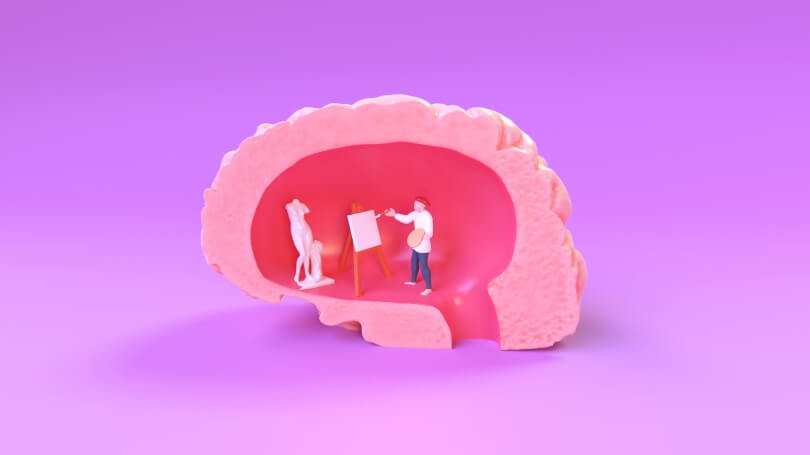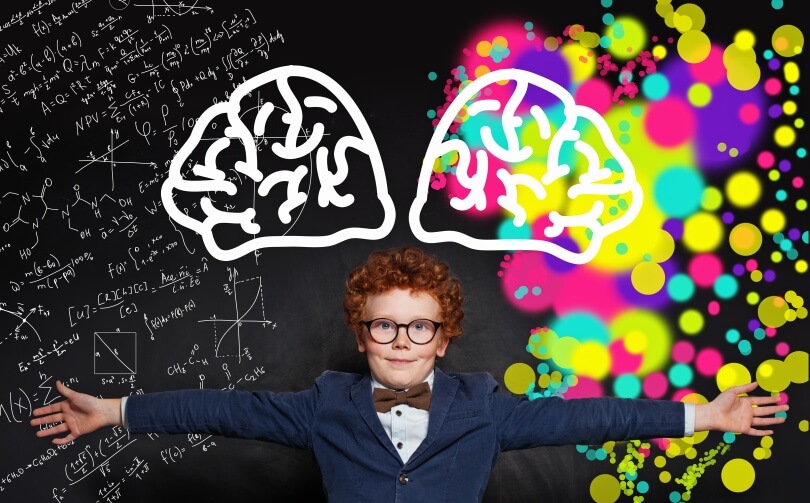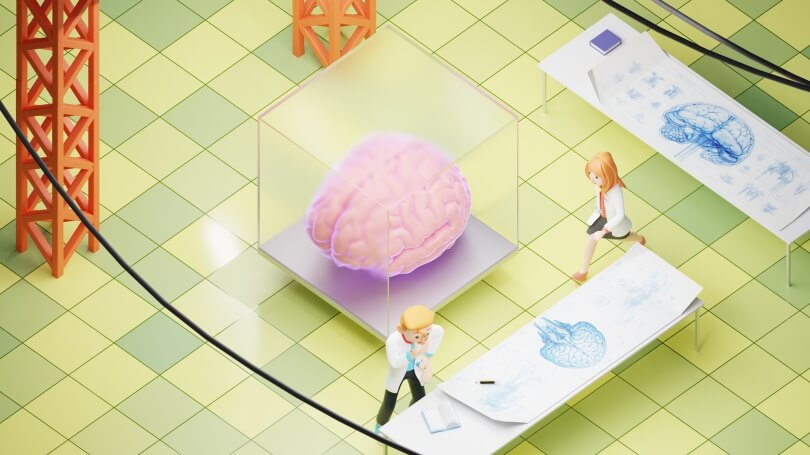Table of Contents
The Impact of Emotional States on Habit Formation

The Subconscious Emotional Landscape and its Hidden Influence
The intricate connection between our subconscious and emotions plays a pivotal role in the formation and maintenance of our habits. Delving into the habit formation psychology, it’s evident that emotional states are not mere byproducts of neural machinery but active contributors to the behavioral patterns we develop.
Our subconscious habit influence often manifests in ways we might not consciously recognize. It’s akin to an iceberg where the bulk remains unseen, yet it’s the driving force behind the surface behaviors. To illustrate, consider the emotional impact on habits when a person feels stressed. They may automatically reach for comfort foods, a habit formed and sustained by the emotional need for stress relief rather than hunger.
Emotional Triggers and Habit Loops
The loop of cue, routine, and reward, as proposed by Charles Duhigg, stands at the core of habit formation. Emotional triggers often serve as cues, igniting patterns that culminate in a reward that soothes the emotional state. This reward reinforces the neural pathways, making the habit more entrenched and likely to be repeated.
- The smell of baked goods may trigger fond memories (emotion) and lead to a routine of visiting a bakery (habit).
- Anxiety might prompt nail-biting as a coping mechanism, unconsciously driven by a need for self-soothing.
- Feelings of loneliness could result in scrolling through social media, seeking digital interaction as a reward.
Understanding these triggers and the subsequent emotional satisfaction they provide is crucial in rewiring habits. A habit once formed is not set in stone; it’s malleable, like clay, given the right tools and awareness.
The Science of Shifting Habits
Research helps us understand the emotional impact on habits and how to influence change. By reprogramming the subconscious through repeated positive experiences or by developing mindfulness, one can begin to break old patterns. The neural plasticity of the brain allows new pathways to form, enabling more adaptive habits to take root.
For instance, an individual wishing to end procrastination may start associating the completion of tasks with positive emotional states. They could employ visualization techniques, envisioning the satisfaction and relief that comes from finishing work. These visualizations, over time, can establish a subconscious connection between work and positive emotions, nudging the habit loop towards productivity.
Conclusion
The crossroads of subconscious and emotions are where long-lasting habits are formed. It beckons us to keep a compassionate, curious eye on our inner emotional states, recognizing their power in shaping our daily actions. By consciously engaging with our subconscious habit influence, we can forge healthier habits that resonate with our desired life trajectory, turning the invisible drivers of our actions into allies for personal growth and development.
Emotional Reactions and the Development of Automatic Behaviors
The intricate relationship between our emotions and the subconscious mind plays a pivotal role in the formation of habits. Emotional states can either accelerate or hinder the development of automatic behaviors, making the understanding of this interplay essential for anyone looking to harness or change their own habits.
Emotional Impact on Habits
At the heart of habit formation psychology lies a simple truth: our emotions significantly influence our actions. When a behavior consistently evokes a positive emotional response, we’re naturally inclined to repeat it, reinforcing the habit. For instance, the satisfaction one might feel after completing a morning run can encourage daily repetition of this behavior. Conversely, if an action triggers negative emotions, we are less likely to engage in it regularly.
Understanding subconscious and emotions, we realize that the subconscious mind works beneath the surface of our conscious awareness. It stores all our previous experiences and the emotions associated with them, which is why an emotional impact can often initiate a habit without our conscious intent. For example, someone who experiences stress relief after eating chocolate may subconsciously develop a habit of reaching for sweets when feeling overwhelmed, illustrating the subconscious habit influence.
The Role of Emotional States
Emotional states are momentary experiences that can have long-lasting effects on our behaviors. Elevated states such as joy, excitement, or pride can boost the likelihood of forming positive habits. When a person feels joy from social interactions, they are more likely to cultivate a habit of engaging with friends and family regularly. On the flip side, persistent negative emotional states like sadness or anxiety can contribute to the development of detrimental habits, such as substance abuse or isolation.
The dynamics between our emotional states and subconscious processes are complex, and they hold the key to understanding and modifying our behavior patterns. A practical example of this is the process of behavioral therapy. By identifying emotions tied to unhealthy habits and consciously altering them, individuals can gradually reprogram their subconscious tendencies.
Subconscious Habit Influence
The subconscious mind exerts a powerful influence over our habits, often dictating our actions without our immediate realization. Habits such as nail-biting or mindless scrolling on a smartphone can be directly linked to the emotional relief they provide at a subconscious level. This type of automatic behavior is frequently a manifestation of deeply-rooted emotional patterns and can be difficult to change without addressing the underlying emotions.
Interventions like mindfulness and cognitive-behavioral strategies can help individuals bring subconscious habits into conscious awareness, fostering a greater understanding of the emotional triggers behind them. By doing so, they enable the formation of healthier habits that align with one’s conscious goals and values.
In essence, the bridge between emotional experiences and the realm of the subconscious mind is where the seeds of habits are sown. Our emotional reactions, often fleeting and unnoticed, are significant players in the development of automatic behaviors that shape our daily lives. Recognizing and acknowledging this can empower us to steer our habits in directions that lead to greater well-being and fulfillment.
Rewiring the Brain for Positive Habit Formation

Identifying and Modifying Emotional Triggers for Habit Change
The intricate dance between our subconscious and emotions plays a pivotal role in shaping our daily habits. Understanding the profound emotional impact on habits allows us to remodel behavior in transformative ways.
The seeds of habit formation lie not in the conscious mind, keenly aware of its intentions, but in the lush underworld of the subconscious. Here, hidden emotional triggers can instill patterns of behavior that, once established, can seem as natural and involuntary as breathing.
Demystifying the Subconscious
To tap into the power of subconscious habit influence, it’s essential to understand how the subconscious operates. Operating silently, this part of our psyche records every experience, emotion, and thought. Unlike the conscious mind, which is occupied with rational and analytical thinking, the subconscious occupies itself with processing emotions and memories, influencing our actions without us being overtly aware.
- Emotional Triggers: Triggers often stem from past experiences. A smell or sound associated with a pleasant memory can ignite a craving for activities linked with that memory.
- Repetitive Conditioning: The subconscious mind thrives on repetition. What we practice regularly becomes embedded as a staple in our behavioral repertoire.
- Emotional States: Temporary feelings of joy, stress, or sadness can lead the subconscious to initiate habits that align with these emotional states, seeking to maintain or mitigate the feelings.
The Science of Habit Formation
Delving into habit formation psychology reveals a consistent pattern – the habit loop. It consists of a cue, a routine, and a reward. The cue triggers the behavior, the routine is the behavior itself, and the reward is the outcome that reinforces the habit.
- Reward Sensitivity: Our subconscious is adept at recognizing and seeking rewards, often linked directly to our emotions, leading to habit persistence or formation.
- Neural Patterns: As habits form, neural pathways in the brain strengthen, allowing for faster and more efficient processing of the associated behaviors.
- Emotional Resonance: The more emotionally charged an experience, the more likely it is to become a powerful motivator for habit formation.
Modifying Habits through Emotional Understanding
To effect change, one must first identify these subconscious drivers. The interplay of subconscious and emotions should be addressed through reflection and mindfulness:
- Mindfulness Practices: Activities such as meditation can increase awareness of our emotional triggers and the habits they unleash, offering the chance to intervene.
- Behavioral Experiments: Altering responses to emotional cues through deliberate changes in our environment or routine can lead to new, healthier habits.
- Emotional Intelligence: Enhancing our ability to recognize and manage our emotional states provides us the control needed to establish more desirable habits.
By proactively identifying and understanding the emotional currents that steer our subconscious, we can reprogram our habit circuitry for a more intentional and empowering life. Combining the insights of emotion and behavior science, we witness the emergence of a conscious architect crafting a life through choice rather than the passive recipient of subconscious programming.
Cultivating Emotional Resilience to Sustain New Habits
Understanding our subconscious can be like navigating a labyrinth; it’s intricate, largely uncharted, and plays a critical role in how we form and maintain habits. By combining the insights from habit formation psychology with the understanding of our emotional landscape, we can lay the groundwork for lasting change.
The Tie Between Emotions and Subconscious Habit Influence
The emotional impact on habits cannot be underestimated. Every habit formation takes root in the fertile ground of our emotional states, subtly but powerfully steering our subconscious. Subconscious and emotions are interwoven in a dance that predetermines our reactions and routine behaviors. For instance, comfort eating is a stark embodiment of how emotions can fuel a habit; a feeling of sadness or stress triggers the subconscious desire for a short-term emotional salve through food.
Mapping the Terrain of Habit Formation Psychology
Delving into habit formation psychology unveils patterns and principles that govern how habits are created and reinforced. A fundamental understanding is the ‘habit loop’: a cue triggers a routine, which results in a reward. The emotional satisfaction derived from a habit – the reward – reinforces the neural pathways in the brain, strengthening the habit. For example, the dopamine rush following exercise can solidify a workout habit, as the brain subconsciously starts to associate physical activity with positive emotions.
Strategies for Sustaining Habits through Emotional Stability
Long-term habit maintenance requires more than superficial changes; it requires a bedrock of emotional resilience. When emotional states are volatile, habits can easily waver or crumble. But when we cultivate a sense of stability, our habits have a better chance to take root and thrive. Practical mindfulness exercises, such as deep breathing or meditation, can help stabilize our emotions and by extension, reinforce positive habitual behavior.
The journey to mastering the subconscious habit influence involves consistent attention to the interplay between our emotions and our repeat behaviors. As we grow more adept at responding to emotional cues with awareness rather than automatism, the more empowered we become to shape our habits – and our lives – for the better.
Summary
The Impact of Emotional States on Habit Formation has been recognized as a key component in the psychology behind why we develop certain behaviors. Emotional impact on habits is not negligible; it’s a powerful force that can establish long-lasting routines.
Understanding habit formation psychology unveils that our emotional states act as catalysts for the subconscious programming that influences our actions. For example, the relief and pleasure we feel when engaging in a hobby like gardening might prompt us to do it more frequently, reinforcing the habit. Conversely, if we associate discomfort with an activity, such as feeling inadequate at a gym, we might avoid it, thereby preventing a healthy habit from forming.
Emotional responses, fleeting though they may be, interact with the subconscious habit influence to carve out our behaviors. This interplay can lead to positive habits, or sometimes, ones that are detrimental to our well-being. Our brains form neural connections that make a once difficult task more automatic, influenced by the emotions we’ve experienced in relation to that task.
Understanding Habit Patterns
The habits we form are often reactions to deeper emotional states. These responses are rooted in the subconscious – beneath our conscious awareness – yet they steer our actions strongly.
- The comfort one feels while reading before bed can make it a nightly habit.
- Stress may unconsciously lead us to partake in retail therapy for a sense of relief.
- The sense of connection experienced from a phone call with a loved one might encourage more frequent conversations.
Through therapies such as Cognitive Behavioral Therapy (CBT), individuals learn to identify and understand the subconscious and emotions, creating an opportunity to reshape unwanted habits into healthier patterns.
Steps to Habit Change
To modify entrenched habits steered by emotions, one must first bring these subconscious processes into the light of conscious awareness. Techniques such as meditation can sharpen our recognition of emotional triggers, allowing for the interruption and revision of automated responses into beneficial habits.
Through mindfulness, individuals can better understand their emotional landscape and adopt new behaviors that align with their aspirations. This conscious engagement with our internal drivers can ultimately lead us to a more fulfilling and controlled life experience, proving the intimate connection between our subconscious and our patterns of action.
FAQ – The Impact of Emotional States on Habit Formation
How do subconsciously processed emotions influence the reinforcement or avoidance of certain habits?
Emotions processed subconsciously play a pivotal role in shaping our habits; for instance, if we subconsciously associate joy with the act of going for a morning jog, we are more likely to maintain this habit due to the positive emotional payoff. Conversely, habits linked to negative subconscious emotions, such as anxiety felt when thinking about public speaking, can lead to avoidance behaviors, making it difficult for such habits to take root or continue.
How do subconsciously processed emotions influence the reinforcement or discontinuation of a particular habit?
Subconsciously processed emotions can significantly sway our behavior, acting as a silent partner in reinforcing or breaking habits without our overt awareness. For instance, the comfort felt from the nostalgia of a childhood snack may strengthen a habit of reaching for it under stress, while an unrecognized anxiety associated with a workout may lead to quietly dropping an exercise routine. Acknowledging and addressing these emotional undercurrents is pivotal in shaping and controlling our habitual actions in daily life.
How do subconsciously processed emotions influence the reinforcement of new habits?
Subconsciously processed emotions play a crucial role in habit formation as they provide a feedback loop that reinforces behavior; for instance, if a new activity like jogging leads to positive emotions, even if they are not fully conscious, the subconscious mind associates that activity with a rewarding feeling, increasing the likelihood that the habit will stick. Conversely, negative emotions tied to an experience can subconsciously deter the continuation of a habit, which is why habit change often requires creating positive emotional experiences linked to new behaviors.








